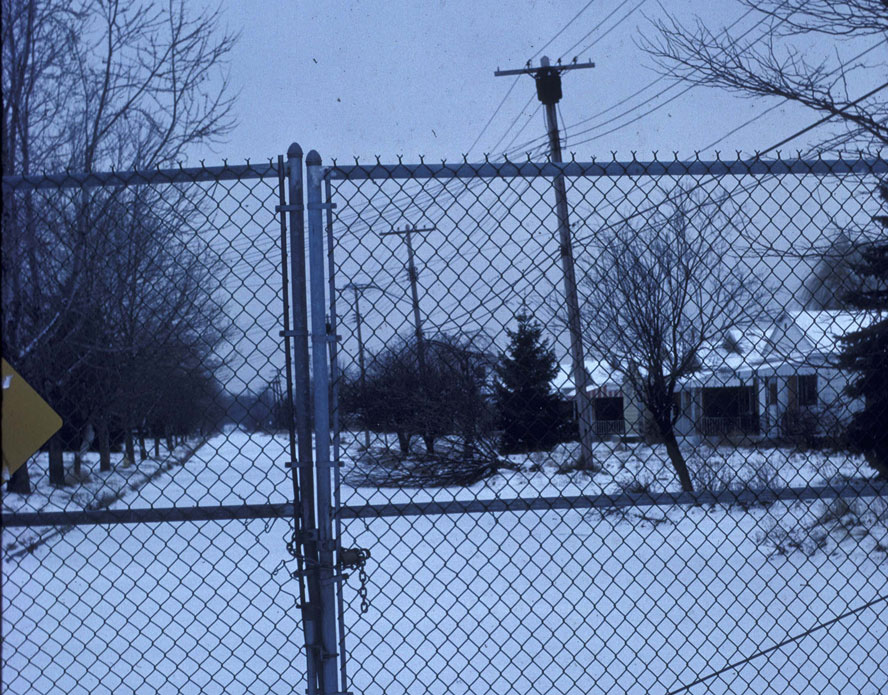
Author’s Note: This is my first article on scientific fraud, about the resettlement of the Love Canal neighborhood, written in 1983 when I was 19 years old. I learned skills reporting and writing this article that I still use today, mostly from my conversations with Lois Gibbs. It was Lois who figured out that there was a problem associated with the neighborhood built around and on top of 21,800 tons of buried chemical waste — and radioactive remnants of the Manhattan Project. I had no idea at the time that writing this article would set the course of my journalistic career. Here is the article as it appeared in the SUNY Buffalo student magazine 37 years ago, with minor corrections.
By Eric F. Coppolino
From The Current, September 27, 1983 (SUNY Buffalo student newsmagazine)
“When today’s visitor to the Love Canal neighborhood feels a chill, it is from the sight of abandoned homes, with boarded up windows and doors and overgrown yards… What the visitor sees are reactions to things that lie essentially hidden, detectable only by special procedures. Chemicals are present under the ground, in the yards and houses, and in the air, and in people’s bodies; but Love Canal is a conceptual event, for the physical manifestations can readily be overlooked, denied, ignored, and minimized.”
— UB Professor of Sociology Adeline Gordon Levine from her book Love Canal: Science, Politics, and People. More documents and photos at the SUNY Buffalo Love Canal Archives
At present, the activity at Love Canal is at a lull; major demolition work ended this summer with the removal of the 99th Street Elementary School, the last historic landmark to the events of 1978, 1979, and 1980. The school shared the fate of 269 “inner ring” homes (those directly surrounding and across the street from the landfill), which were removed in the summer of 1982. All that remains on the three hundred acres of the third, or outer ring, are some 555 private houses and three hundred four rental units. The safety of these homes, which has not been determined, is the contingency upon which governmental resettlement plans are based.
The issue of resettlement is simple enough on the surface: test the area for possible contaminants. If they are present, stop resettlement plans. Yet these is hidden controversy.
The State’s motive in resettling is the area must be questioned: are their concerns centered around the health of the future residents, or are they concerned with recovering as much as possible of their financial loss, which totals in the hundreds of millions of dollars?
There is an apparent conflict of interest between federal and state agencies determining the habitability of the area, and at the same time, determining whether state and federal monies can be recovered.
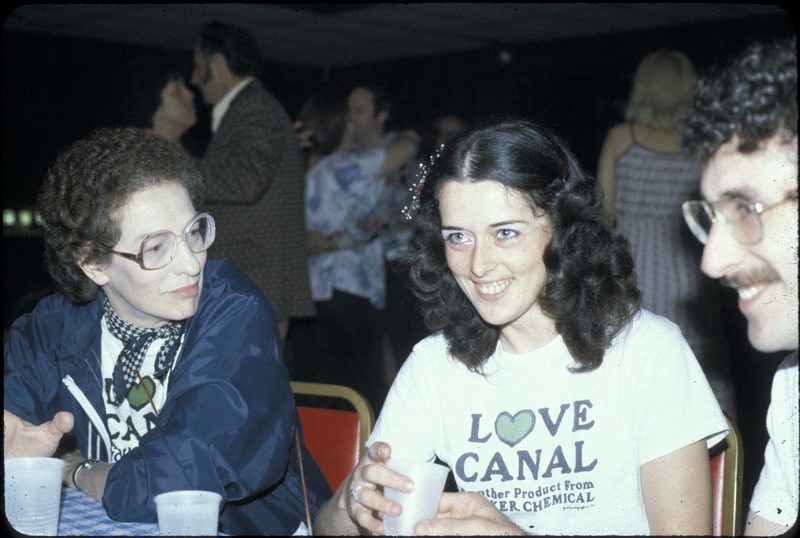
Thus far, all government-sponsored studies on the habitability of the Love Canal area have been consistently ambiguous, evasive and inconclusive. The most infamous of these reports was a study released in the summer of 1982 by the federal Environmental Protection Agency (EPA). The $4 million-plus report, claimed by its authors to be an authoritative, “state-of-the-art” study, was hazed in controversy since its release. The report concluded, based on air and soil samples, that the ring three area was “not uninhabitable”, and as safe to live in as the control areas in Niagara Falls.
The earliest criticism came from Representative LaFalce of Niagara Falls, who noted that the EPA had changed its mind on the question of habitability less than twenty-four hours before the report, then eighteen months late, was released.
The final blow to the EPA’s credibility came last spring when another federal agency, the Office of Technological Assessment, published its Congressionally ordered evaluation of the EPA study. The OTA concluded that the methods and extent of the research used by the EPA were neither complete nor careful enough to even speculate about the habitability of the area. In particular, the OTA cited that no research had been done into tracing the possible migration patterns of the chemicals, including dioxins, from the dump site to the surrounding residential yards and streets. In addition, the report, which called for close monitoring of the area once it was resettled, made no provisions for any type of monitoring of the levels of toxins in the local environment, and failed to calculate the possible “synergistic” effects of several types of toxins blending and forming new compounds.
[Note in 2020: Synergistic effects also happen in the body. The issue is the effect of exposure to multiple compounds, which is never studied in a risk assessment. Risk assessments go one chemical at a time, which ignores the most serious problem of a buildup of multiple compounds acting in concert with one another. When they are brewing in the environment, they can also combine into new, previously unidentified chemicals that will have undocumented issues. For more about risk assessment, please see this article.]
The report also failed to mention the “swale theory” of the spread of toxins, which speculated that the chemicals moved through the ground following low-lying depressions in the landscape and underground man-made channels cut by sewers, electric cables, and telephone lines.
However, the EPA report was widely accepted by government officials. Mayor O’Laughlin of Niagara Falls commented last week, “We’re expecting the EPA to defend its stance on the report some time this week. If the OTA had not come out so strongly against it we’d be a lot further along in the resettlement.”
The idea of resettlement was conceived in 1979, less than one year after the original crisis broke, and less than one year before the ring three homes were evacuated. As state and federal governments began to realize the losses they were incurring, they began devising ways to recover the losses. The largest such project has been the Love Canal Revitalization Agency, whose offices are located on a converted three-bedroom house across the street from the dump site.
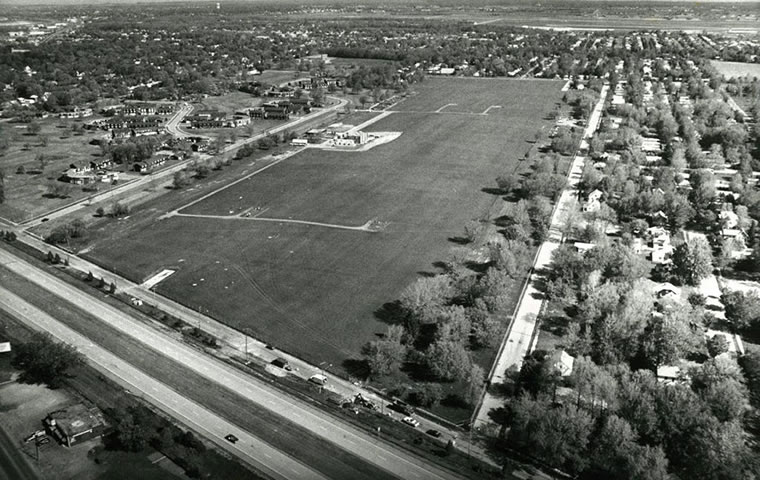
The Revitalization Agency was created in 1980 by state legislation to purchase any and all third ring homes from residents who wanted to vacate. The Agency maintains the vacant houses and yards, and will plan and execute the resettlement if and when the time for that to arrives. To date they have purchased 426 of the 555 outer ring homes, at a split cost to the state and federal governments of $13 million. The remaining 124 homeowners have the option to sell their homes to the Agency until October 1984.
In spite of the constant dispute over the credibility of health and safety studies done on the area, including the EPA’s 1982 report, agency director Richard Morris says he is currently holding a list of 270 families interested in moving into the area. None of them are previous residents. Morris, who lives in the Love Canal neighborhood with his wife and two college-age daughters stated, “If we advertise the possibility of these homes going on sale, we will be flooded with requests for information. But we won’t sell any homes, or even advertise, until the EPA finally concludes that it is safe for people to live here. It is a matter of public health.”
Among the Agency’s plans for revitalization, aside from the actual sale of homes, is a superficial face-lift for the area. Street names will be changed, as will the name of the entire community; new parks and “village squares” will be built and houses themselves will be spruced up with a fresh coat of paint or new aluminum siding. The only plans for chemical cleanup, according to Morris, are to flush the storm sewer system in the area, and the possible cleanup of Black Creek into which the sewers flow. Both the sewer and the creek are tainted with dangerously high levels of dioxins.
Richard Morris has not yet finished his sales pitch for Love Cana homes, but he is working with ideas. A prospective buyer would certainly demand an answer to the question, “Is it safe for my family to live hear?” Morris said, “I couldn’t really give a definite answer to that, but I would give prospective buyers copies of the state and federal safety studies and let them decide on their own.” He continued, ” If you’re worried about living near a toxic waste dump, Love Canal is probably the safest place to live in Niagara Falls. It gets a lot of scientific attention. You know what you are getting.”
As far as selling to people in their child-bearing years, Morris states that he “would probably advise young couples not to have children here, not for their safety, but for their piece of mind. Danger is a very subjective thing,” he continued. “It’s all a matter of personal opinion. It doesn’t bother me to live seventy-five feet from Black Creek because I don’ play in the mud. All of the government reports are open to interpretation. We hope that people who feel that the Love Canal neighborhood is safe will soon have the opportunity to live here,” Morris concluded.
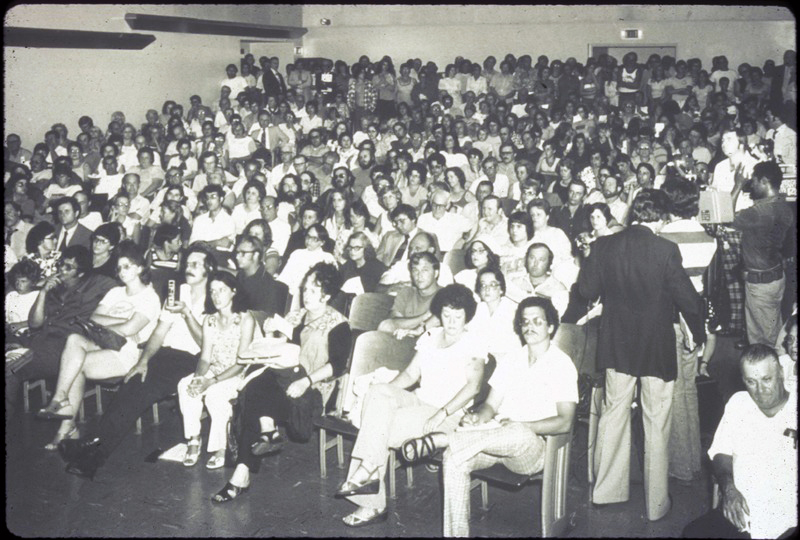
The 21,800 tons of toxic chemical wastes are contained in 55 gallon fiberglass or steel drums, and are sitting in what is effectively a semi-porous clay bathtub at the center of the community. The chemicals were deposited in three sections in the canal, which had been excavated to a depth of twenty-five feet and were eventually covered with dirt when the dumping was finished. As the barrels collapse or leak, largely from the corrosive effects to the chemicals within them, the toxins are released to the earth uncontained.
Many past residents of ring one whose backyards extended to the land directly above the canal, frequently complained of “black, sludgy, ill-smelling puddles” accumulating and remaining for years in their backyards. Children were photographed playing with Tonka Toy bulldozers in the chemical mud, and on many occasions, the chemicals leaked directly into the basements. These inner ring homes were the first to be condemned and fenced off and the first structures to be removed.
Any remedial construction work that has been done to the Love Canal has been in an effort to contain the wastes within the restricted area, which now includes the former location of the two hundred sixty-nine inner ring homes. The first such project, installation of an underground drainage system, was begun in October of 1978, soon after the crisis was discovered by the press. The drain collects ground and rain water that seeps through the canal and channels it to a detoxification plant nearby.
Other efforts center around keeping the landfill dry, thus preventing further leaching and seepage into the surrounding ground. Within the next few weeks, the 16-acre lot will be covered with a layer of waterproof vinyl and an additional 18 inches of topsoil in an effort to keep water away.
Recently it was proposed that a thick concrete retaining wall be placed underground around the site to prevent the exchange of ground water. Before the proposed construction was to begin, samples were taken from the ground at the fence line. It was discovered that these samples, taken in most cases within a hundred feet of ring three homes, contained unexpectedly high levels of contamination. Plans for the wall were discarded as useless; the chemicals had diffused into the surrounding environment at least thirty years before any efforts were made to contain them.
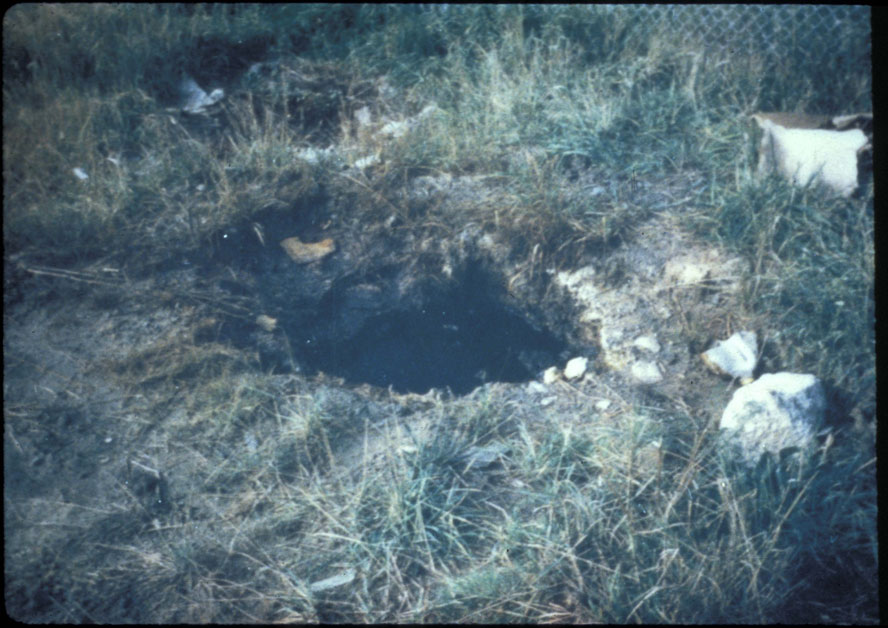
In assuming safety of Love Canal homes, the Revitalization Agency, backed by the state, is guilty of either ignorance or negligence. And they are fueled by the ignorance of the people who their decisions affect.
Morris states with conviction that the 426 families who sold their homes to the Revitalization Agency did so mainly because they were afraid to hold on to their otherwise worthless properties. Others, he said, moved to “follow the crowd” or because they did not wish to live in an empty neighborhood. And a small minority, he contended, moved for fear that the contaminants were affecting their health.
UB sociology professor Adeline Levine believes that there were far more serious motives behind the evacuation.
The Revitalization Agency created and purchased its first Love Canal home within days after the news was released that some residents of the area had suffered chromosome damage from long-term exposure to toxins. Said Levine, “You had to be there to hear the people crying, virtually begging to leave when the Board of Health of the EPA would hold meetings at the school. It is very easy to brush off the matter by saying, “Oh, they were just taking advantage of a little good real estate speculation.” But that is not how it was; people were really afraid for their lives.”
Of the remaining residents in the Love Canal neighborhood, Morris is sue that they were well-informed, devoted citizens who see the conservative, realistic side of the story. This too, is challenged by Levine. “The people who are living there now, “she said, “mostly cannot leave because they are too old, they do not believe that they are in any danger, or they do not know any better.”
I spoke to a young man as he leaned out the window of his city-owned public house. “I have been living here all my life,” he said, “and nothing has happened to me.” I thought about this for a moment and then asked, “Do you know what chemicals called dioxins are?” “Yeah, I’ve heard of it, but I’m not afraid of it. My water tastes fine.”
I spoke to an older gentleman, Harry, while he was peddling around the neighborhood. Harry said that he had lived there since the late 1950’s, and was adamant that activists had “caused” the evacuation of his neighborhood. “I’ve been living here for years and I’m healthy as a horse.”
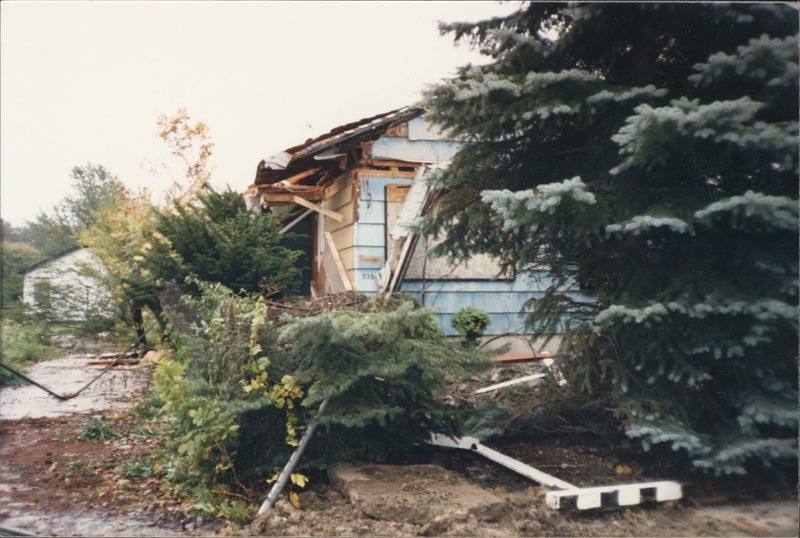
I asked if he was concerned about the possibility that his health was in danger from the buried wastes. “Naw,” he said, pointing over the fence, “all that stuff’s in there, and I believe that Hooker Chemical done the right thing in putting it there. They followed all the government regulations.” (The regulations of the day for filling dump sites, incidentally, stipulated only that flies and vermin be controlled in the process of filling a landfill.) Harry later admitted that he would not even live near Newark, New Jersey, where dioxin contamination was recently discovered.
Finally, I spoke to an engineer who was surveying the levels of toxins inside the fence. “Is it safe in there?” He gestured meza-meza and smiled.
I asked, “What is the ground like beneath you?”
The sound of his voice was muffled through his air filtration system, so he shouted a little. “It’s OK for about five feet, and then it starts to get messy.”
“And out here?” He shrugged his shoulders.
There are frightening prospects for the sequel to the Love Canal story. Imagine for example, the fine print of the deeds of the next generation of homeowners, which will likely protect the state from any possible mandatory re-purchasing of the homes due to contamination — homes owned by people who were unaware of what they were getting themselves into. The Love Canal neighborhood is no safer today than it was when the ring three homes were evacuated. And while no one is sure of the extent of the danger, fear of the unknown certainly seems justified here.
In the mean time, the Love Canal Area Revitalization Agency, backed by federal and state governments, and by the city of Niagara Falls, is functioning as a full-time, on site real estate agency.
And 227 families, lured by the prospect of very nice, three bedroom homes a $35,000 a piece, are waiting to hear official word that it is safe to move in.++
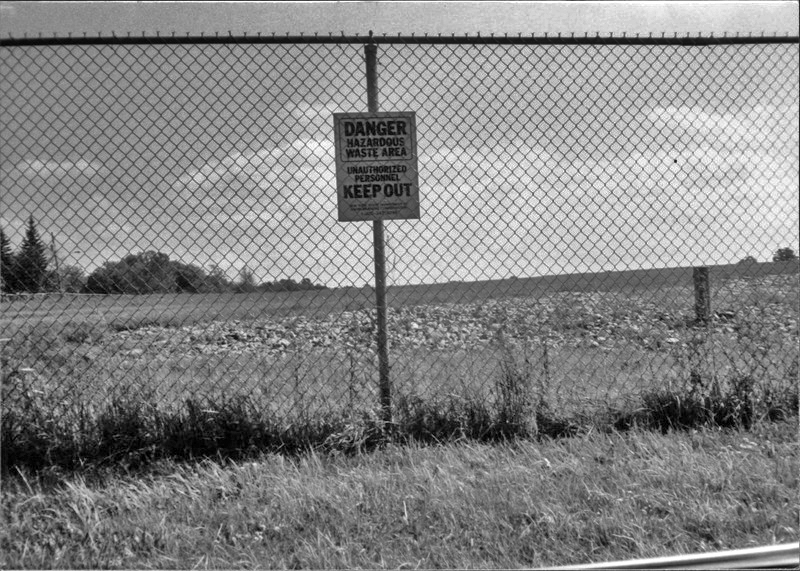




4 thoughts on “Resettling Love Canal Amidst Unsettling Questions”